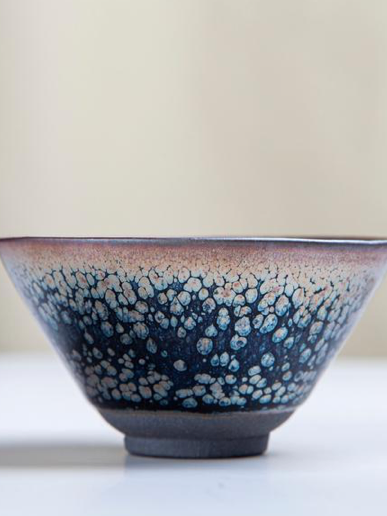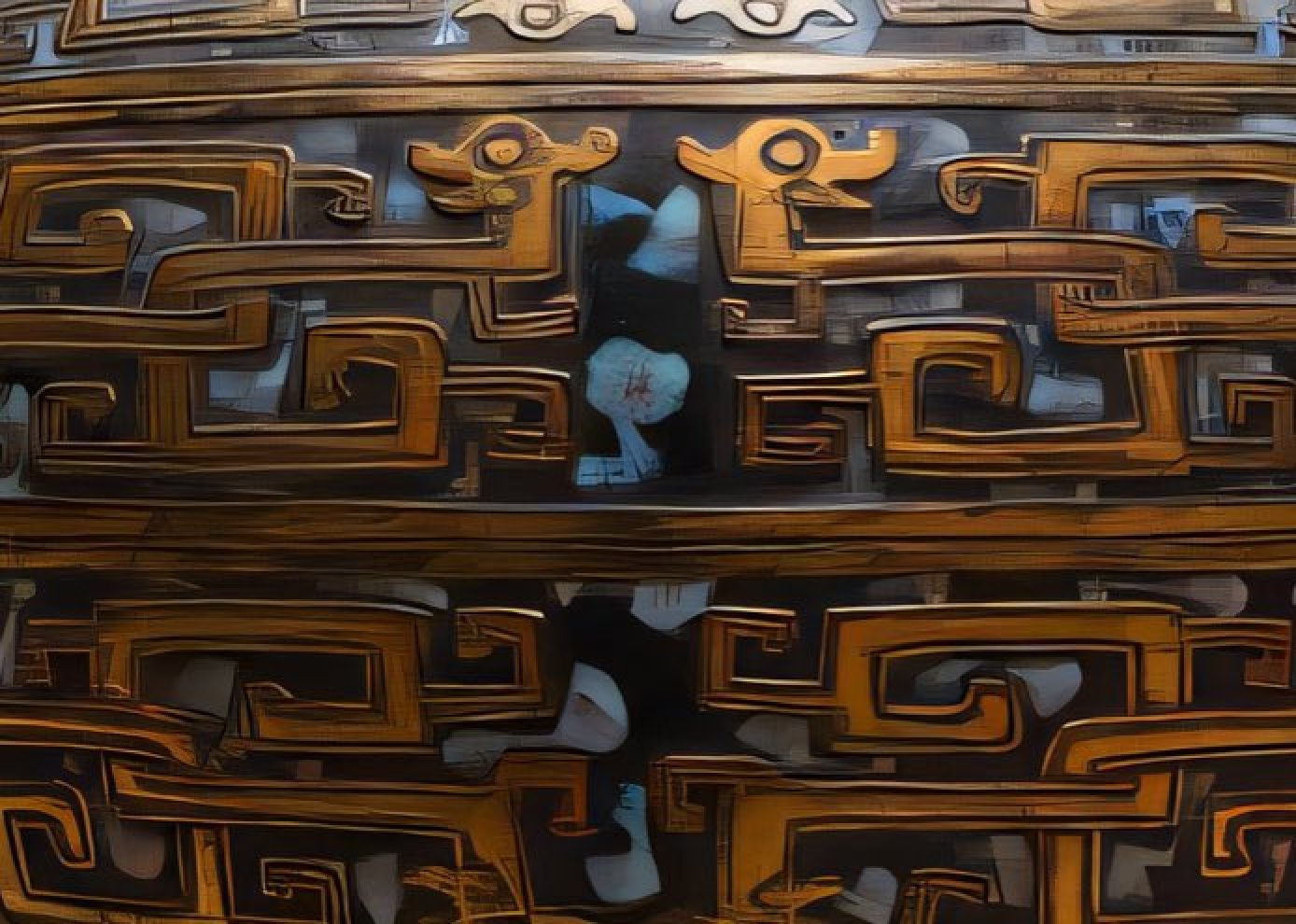Traditional Chinese Art Crafts
Traditional Chinese art crafts have gone through a long period of evolution, which reflects not only the historical, dynastical, economic and societal changes of ancient China but also the development of artistic perspective and style as well as the technique capability of the Chinese people. There are many traditional Chinese art crafts worthy of attention and appreciation. However, due to the space limit, this short article will introduce only the following four major art crafts of traditional China to readers.
Traditional Chinese ceramics includes two primary categories: the low-fired earth (tao 陶, pottery) (the word also means yao, kiln), and the high-fired earth (ci 瓷, porcelain). The Chinese began to make and use pottery tools as early as the Paleolithic era. There were two types of the well-known pottery: the painted pottery and the black pottery. The hand-made painted pottery appeared around 4000-5000BC. Its polished surface was painted with red ochre, black, white or other colors and decorated with geometric lines of fish, deer, pig, bird, frog, human face, etc. or triangle, reticulate and sawtooth lines. The black pottery made via the tool of wheel appeared around 2500BC and are characterized by its black colored, glossy, thin and hard skin and iron-like appearance.
The Terra-Cotta warriors excavated from the tomb of the first emperor of the Qing Dynasty, which are realistic, life-like, clay mold with colors, represent the high development of the Chinese skill of making pottery in terms of quality, quantity and size. The strong economy, effective governmental management and open policy of the Tang Dynasty stimulated the development of pottery production. The lead-glazed “Tang San Cai” (Three Colors of Tang) is worldwide well-known, painted and glazed with lead glaze which could form yellow, green and white colors in a harmonious way. “Tang San Cai” sculptures look bright and colorful, and their shapes are abundant, natural, vivid, and dynamic.


During the Shang Dynasty, many oracle bones and casting bronzes were used as the ritual and sacrificial tools and the means for ancestral worship. The decorative design cast on those bronzes, mostly Ding, includes many animals such as cicada, tiger, water buffalo, elephant, hare, deer, owl, parrot, fish, silkworm, etc., as well as legendary figures such as dragon-like creatures, Taotie masks, etc. According to some legends, Taotie is a monster who has a huge appetite and could eat tons of foods and who is the symbol of war. Other decorations, such as clouds, river, thunder, tribal totems, and leiwen (dynamic and linear spirals), display the ancient motifs of natural forces.
By the Zhou Dynasty, the religious function of bronzes was weakened. They gradually became a means of communicating to the clan ancestors and the heaven for posterity, and to record the honor and achievement of the living aristocrat, with lengthy inscriptions. Zhou bronzes were more coarsely modeled than those of the Late Shang, with sagging and heavy shapes and large and spiky flanges. Taotie, long dragon, and other mythical creatures disappeared from the decoration designs for bronze, due to a change in the religious beliefs: Zhou ruling class saw animals and birds not as protective clan symbols but as enemies to be fought against or conquered by earthly heroes. Jade art crafts were ranked high in protecting the body at burial.
The huge extravagance of middle Zhou bronze décor seems to have exhausted itself during the Warring States period. Ungainly excrescences are shorn off, and the surface is smoothed away to produce an unbroken, almost severe silhouette. The decoration becomes more strictly confined and is often sunk below surface. The pattern of flat interlocking bands of dragons looks forward to the intricate decoration of the mature Late Warring States style. The realistic birds and other creatures adorn their lids. The metalworker’s art was diverted from “community plate” to “family place.” Chinese bells, produced with two different notes and used for musical dance for Confucius ritual practice are unique in the world.
Under the Han Dynasty, Confucianism surpassed all other political ideas and became the state ideology. The Confucian orthodoxy and the desire to moralize were so powerful that some supernatural images emerged, which represent fantastic, fabulous mystical cosmological themes, such as xiangrui (good omens) motifs, including phoenixes, white unicorns, flying horses, spiritual fungus (lingzhi). Also, Taoism arose as an important source of inspiration at that time.


The earliest Chinese porcelain, the so-called “porcelaneous wares” or “proto-porcelain wares” made by clay mineral (kaolinite) fired at high temperatures, appeared during the Shang Dynasty around 1000BC, and the real porcelain was produced in the Eastern Han Dynasty.
In comparison to pottery, porcelain has tougher texture, more transparent body and finer luster. The technique of producing porcelain was matured by the Tang Dynasty. Yue kiln’s green porcelain of the Tang Dynasty is famous for its super technique, mild and moist glaze, thin and hard skin, and bright and beautiful color. Xing kiln’s porcelain is characterized with its thick and strong skin, white and moist glaze, and various elegant shapes. During the Song and the Yuan, the economic growth, the booming of trade and commerce, the urban prosperity, and the flourishing of literature and arts all together lay down a solid foundation for the development of porcelain industry.
The management of craftsmen, although on a large scale, became very efficient, and was divided into two major systems: official groups and folk groups. The sophistication of both official and nonofficial management systems reflected the highly developed labor division. As a result, porcelain and craftwork arts reached its height. There appeared many porcelain products with various elegant shapes, bright and different colors, and beautiful and unique decorations. They were a perfect combination of art, craftsmanship, and utility. Song porcelain includes three major systems: green porcelain, white porcelain, and black porcelain, produced by many production centers.
The porcelains of the Song dynasty are well known as the “Five Famous Kilns”: Guan Kiln, Ru Kiln, Ge Kiln, Ding Kiln and Jun Kiln, which produced variously colored porcelains with graceful shapes and subtly glazed with shallow relief or paintings. Green or celadon colored porcelains were most popular. However, those produced for the court and the literati were monochrome, emphasizing the effect of glazing and fineness of shaping. Official Kiln (Guanyao) belonged to the court was built up in the capital Kaifeng in the Northern Song and moved to Hangzhou in the Southern Song. The porcelain produced by Official Kiln is more exquisite and elegant. Its skin is thin and glaze is thick, so that it looks very translucent. It has very fine, smooth and even glaze, with pink green, grass green, milk white and light green colors. Its “shrimp green” porcelain is one of the best among the green porcelains. Ru Kiln’s (Ruyao) porcelain is glazed with agate element and green and bright colors, fluctuating along the changing light, like jade but not jade. It is ranked as the number one of northern green porcelain and the crown of the Five Famous Kilns “Brothers Kiln” (Geyao) of Dragon Fountain County invented a kind of porcelain with a unique feature: its glaze looks cracked, like fish scale, cracked ice, plum slices, tattoo, crackle, etc. Ding Kiln (Dingyao) of Ding County, Hebei Province was famous for its white porcelain, which is very refined and decorated with various themes of designs and methods of carving, needle picking, model engraving. Jun Kiln of Henan Province is well known for its heavy, milky and various glaze colors. Due to the special quality of its local soil, the porcelain color fired by and resulted from the Jun Kiln is unique and different every time, appearing carmine, cinnabar red, begonia red, plum green, eggplant purple, sky blue, etc.
The craftsmen working at Dragon Fountain Kiln (Longquanyao) mastered very fine technique and produced porcelain decorated with relief and glazed with beautiful, elegant and moist colors, mostly emerald green, pink green or plum green. Strong Kiln (Jianyao) of the Chidun Village of Shuiji County, Fujian Province was the center for black porcelain. The earth there used for porcelain contains lot of iron that would turn the porcelain into black color during the process of heating and cooling. The black porcelain produced at this site, such as “Rabbit Hair” (Tuhao), “Partridge Speckle” (Zheguban), “Silver Star Spots” (Yinxingban), were all the precious craft works. Their colors, speckles and lines vary, and their glazes are thick but translucent and moist. Jingdezhen Kiln (Jingdezhenyao) at Jingde Town of Jiangxi developed into a porcelain city during the Yuan. Jingdezhen porcelain is characterized by its elegant and exquisite shapes, thin and hard skin, and pure and beautiful glaze. By the Ming , Jingdezhen porcelain glaze appeared more harmonious and showed more varieties of colors, and developed “sweet white porcelain” and “red porcelain” that were breakthroughs in Chinese porcelain history.



Cloisonné is a kind of metalwork objects decorated with colored materials, mainly vitreous enamel, inlays of cut gemstones and other materials, which are separated by metal strips or wire, usually soldered or affixed on their edges with silver or gold. It is believed that the technique of making cloisonné, the so-called “Dashi (大食) ware,” was introduced from Byzantium to China during the 13-14th centuries.
Cloisonné enamel was the finest product of the Ming. Onto a bronze model, welded various designs framed with thin brass lines and then fulfilled with colorful enamels and gilded with silver or gold. Cloisonné enamel was prevailed during the Jingtai years of the Ming, so it was called “Jingtailan” in Chinese. “Jingtailan” is sumptuous and beautiful, and was much loved by the court and the nobles. As a result, there emerged a series of “Jingtailan” products and designs, which the court and noble families collected as treasures. During the Xuande years of the Ming, various exquisite and classic bronze stoves with graceful shapes and rich decorations prevailed, which gained the reputation and were named as “the Xuande stove.”

All articles/videos are prohibited from reproducing without the permission of the copyright holder.




Welcome to leave a message:
Please Sign In/Sign Up as a member and leave a message魏教授,多謝分析!我獲益良多!🙏☺️
#1
Chi Seng Pun
07-02-2023 14:39:44
多謝分析!
如果有一些章節可介紹如何鑑賞這四大手工藝便好了!
#2
Chi Seng Pun
03-02-2023 20:13:38